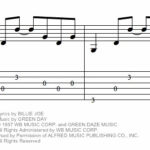When you’re on the hunt for a “Guitar Amp Near Me,” you’re likely thinking about more than just location. You’re searching for that ideal sound, whether for practice, recording, or hitting the stage. But what if the quest for the perfect amp goes beyond the traditional setup you might be envisioning?
Traditionally, the sound of a guitar amp in a room is a unique experience. However, this “amp in the room” sound isn’t always what audiences hear, especially in live or recorded settings. Microphones capture the amp’s output, which is then processed through mixers and delivered via sound systems – often using FRFR (Full Range, Flat Response) speakers. This mic’d and processed sound is distinct from standing directly in front of an un-mic’d amp. In fact, this controlled sound is often preferable. The raw sound from a guitar cabinet disperses unevenly; it can be harsh when you’re directly in front of the speaker’s center and muddier when you move off-axis.
FRFR speakers are engineered to solve this. They provide a consistent sound across a wide listening area, typically around 140 degrees or more. This is why in live sound and recording, the selection and positioning of microphones in relation to the speaker cabinet become crucial for capturing the desired tone without the inconsistencies of the amp-in-the-room experience.
This is where amp modeling and technology like Helix come into play. These systems digitally recreate the sound of various amps, cabinets, microphones, and mic placements, effectively mirroring the techniques used in studios and live concerts to achieve a polished and consistent guitar tone. By using amp modelers with a quality FRFR speaker system, or even in-ear monitors, guitarists can hear almost exactly what the audience hears. This consistency is a game-changer for achieving a balanced stage mix with the band and a great sound for the front-of-house engineer.
The real advantage of FRFR technology is bringing studio-quality sound to live performances. This level of precision, clarity, and articulation, typically heard in professionally produced recordings through high-end stereo systems, can now be achieved live. It’s not solely due to amp modeling advancements, but also the significant progress in DSP-powered speakers designed for live performance over the last decade. These advancements have become accessible to a wider range of musicians.
While setting up an FRFR system might require a bit more effort than plugging into a traditional amp, the sonic benefits are substantial. The enhanced performance quality is increasingly essential for larger venues and even appreciated in smaller local gigs, primarily for delivering a superior sound experience to the audience. So, as you search for a “guitar amp near me,” consider expanding your search to include FRFR systems and explore the possibilities of achieving that perfect, studio-ready sound in any setting.

